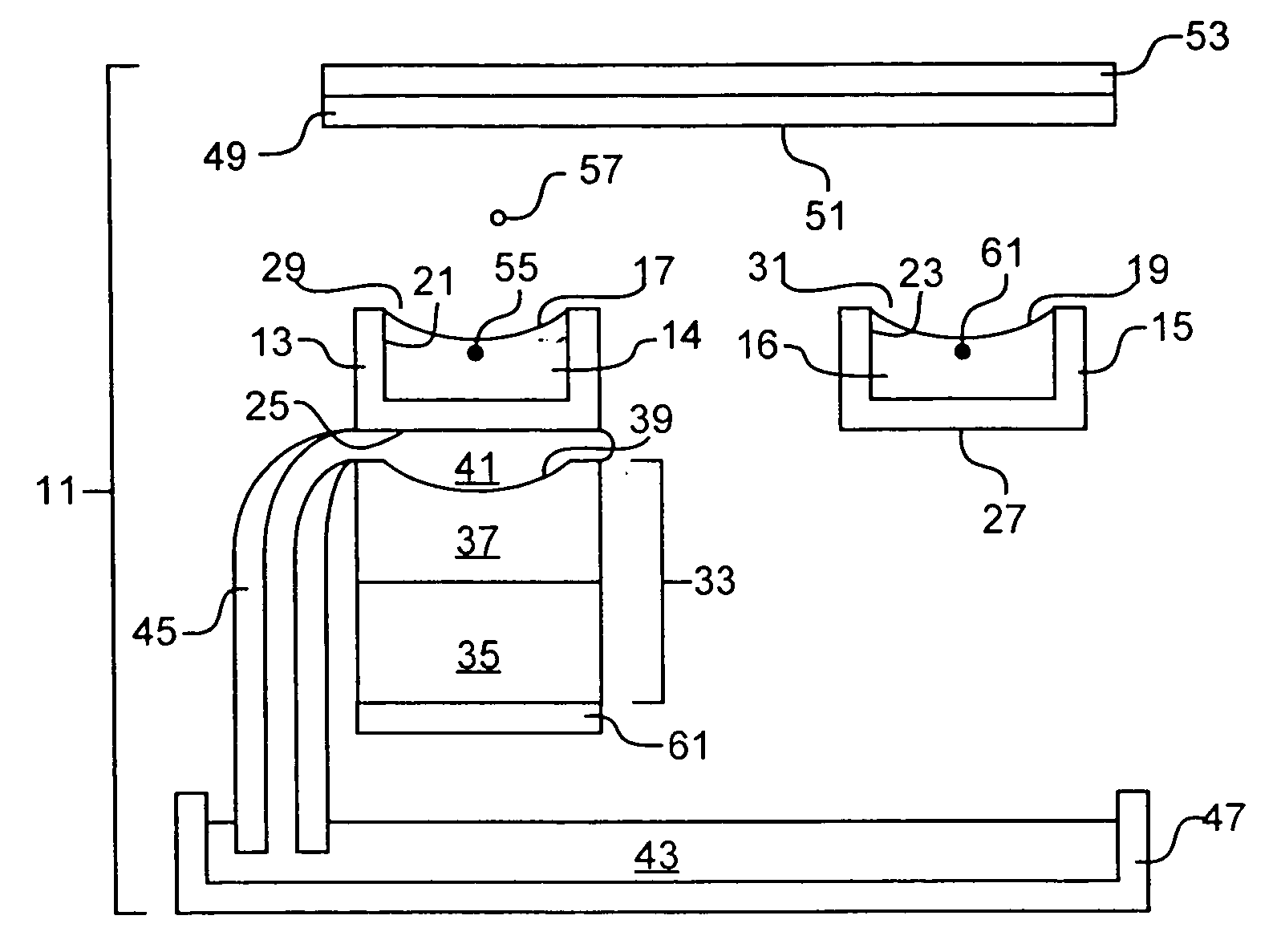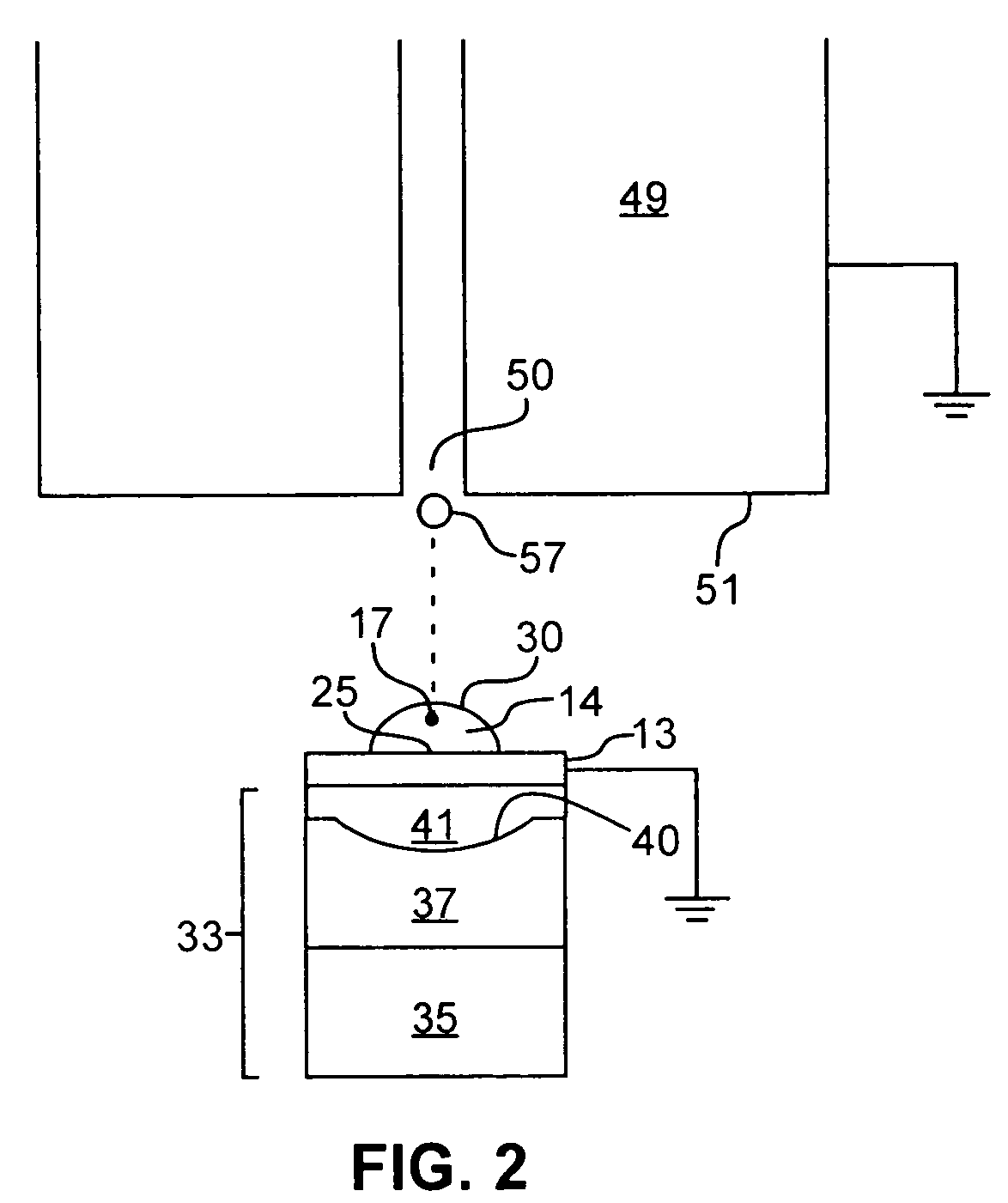Droplet dispensation from a reservoir with reduction in uncontrolled electrostatic charge
a technology of electrostatic charge and droplet, which is applied in the field of droplet dispensing from a reservoir with reduction of uncontrolled electrostatic charge, can solve the problems of unavoidable fluid waste, uncontrolled fluid transfer, and certain inherent characteristics of conventional fluid handling systems, and achieve the effects of reducing uncontrolled electrostatic charge, and reducing or eliminating uncontrolled electrostatic charg
- Summary
- Abstract
- Description
- Claims
- Application Information
AI Technical Summary
Benefits of technology
Problems solved by technology
Method used
Image
Examples
example 1
[0091] A solution containing 70% by volume dimethylsulfoxide and 30% by volume water was placed within each well of a polystyrene well plate containing 384 substantially identical wells. An acoustic ejector having an F2 lens that served to focus acoustic radiation was placed in acoustic coupling relationship successively with each reservoir in substantially the same manner. Without removing uncontrolled electrostatic charge from the well plate, acoustic radiation having a frequency of 10 MHz was directed by the F2 lens into each reservoir so as to eject at least one droplet from each well. In some instances, secondary or satellite droplets were produced in addition to the primary droplets. The primary droplets exhibited a volume variation of over 25% as well as variations in trajectory.
example 2
[0092] Each well of the same polystyrene well plate described in Example 1 was again filled with a solution containing 70% by volume dimethylsulfoxide and 30% by volume water. However, uncontrolled electrostatic charge was removed from the well plate using an ionizer before the acoustic ejector was placed in acoustic coupling relationship successively with each reservoir. Acoustic radiation of having a frequency of 10 MHz was again directed by the F2 lens into each reservoir so as to eject at least one droplet from each well. No secondary or satellite droplets were produced. The primary droplets exhibited a volume variation of less than about 2%. No variations in the trajectory of the droplets were observed.
PUM
 Login to View More
Login to View More Abstract
Description
Claims
Application Information
 Login to View More
Login to View More - R&D
- Intellectual Property
- Life Sciences
- Materials
- Tech Scout
- Unparalleled Data Quality
- Higher Quality Content
- 60% Fewer Hallucinations
Browse by: Latest US Patents, China's latest patents, Technical Efficacy Thesaurus, Application Domain, Technology Topic, Popular Technical Reports.
© 2025 PatSnap. All rights reserved.Legal|Privacy policy|Modern Slavery Act Transparency Statement|Sitemap|About US| Contact US: help@patsnap.com



